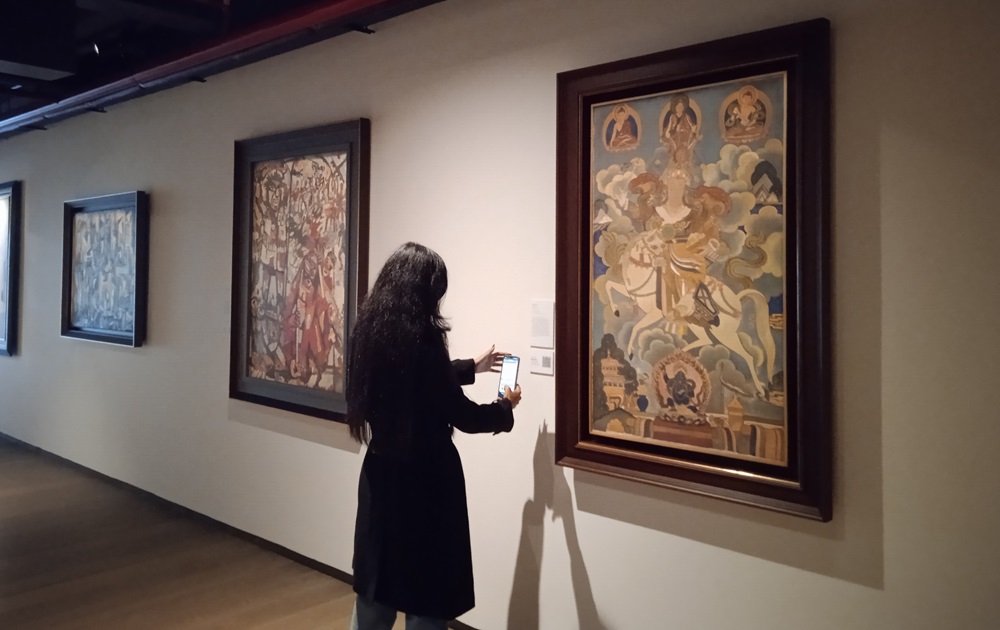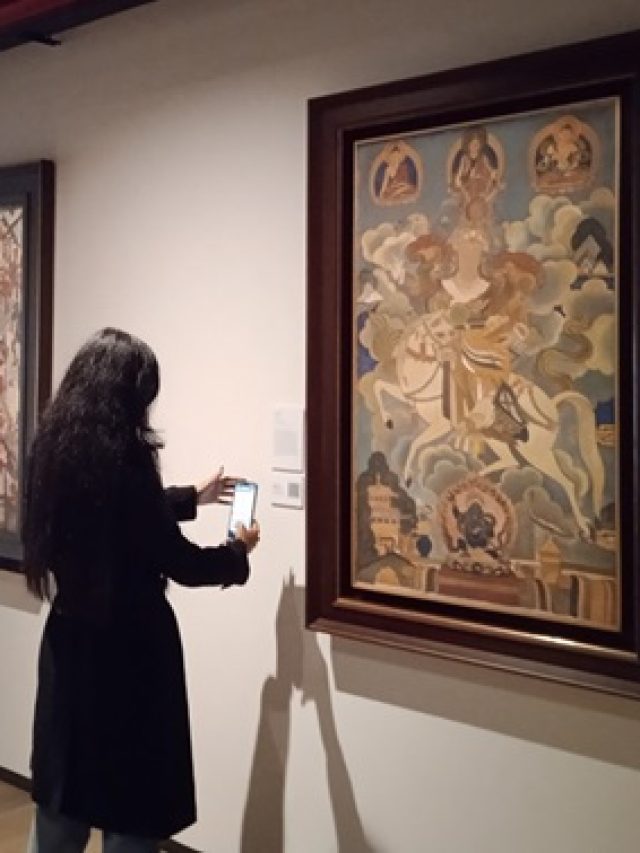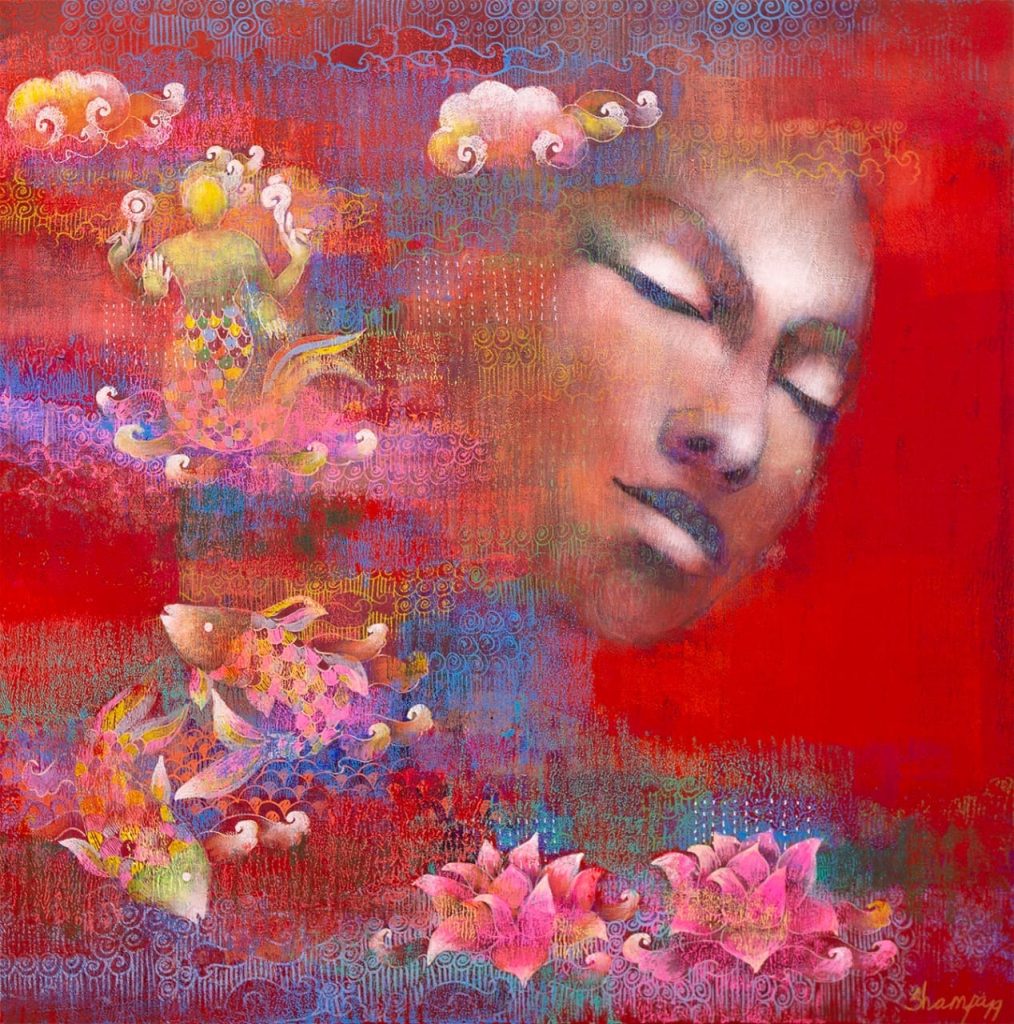A country like India, saturated in spirituality, culture, and tradition, has created some of the world’s most profound artistic creations. Indian art, from the intricate sculptures in old temples to the dazzling colours in traditional paintings, has an ageless element that is felt and relished ubiquitous. In Indian art, a few celebrated figures emerge as exemplars of inventiveness and originality, leaving a lasting impression on the historical canvases. Amateurs and academics are intrigued by these legendary masters who have portrayed India’s visual terrain and inspired worldwide.
The DAG gallery is organising an exhibition called “Iconic Masterpieces of Indian Modern Art” as part of Delhi Art Week that encapsulates those complex artistic practices. This exhibition takes viewers on a historical tour through the lives and creations of these illustrious individuals who have come to represent the diversity and quality of Indian art. From traditional patronages to modern interpretations, every artist contributes a precise outlook to the multicoloured landscape that is Indian art.
Through this exploration, the DAG display seeks to capture the essence of their artistic brilliance by analysing the cultural, social, and spiritual forces that have formed their masterpieces as we untangle the brushstrokes, chisel marks, and creative genius that distinguish the Icons of Indian Art. These renowned masters provide inspiration sources and linkages between Indian art’s history, present, and future, leading us to provoke ingenious expressions over time. The DAG display offers a colossal canvas, brilliant colours, and gripping narratives behind each brushstroke and interpretation in diverse mediums.
Iconic Masters and Schools
The pieces in this exhibition span from 1797 to 2003, showcasing the rich visual history of Indian art and telling the tale of the various artists and groups who have contributed to its multifaceted language. Indian art is an indigenous practice in both life and art. The coming of the Europeans brought perspective and native hybrid styles, like the influential Early Bengal School and Company School, which echoed the emergence of naturalism in the Bombay School powered resistance felt through the stylization of the Bengal School. It marked the great leap to modernism the Progressive and Later Modernists conceived. Indian art is like an Indian life and mind, diverse and flowing in precise lands.
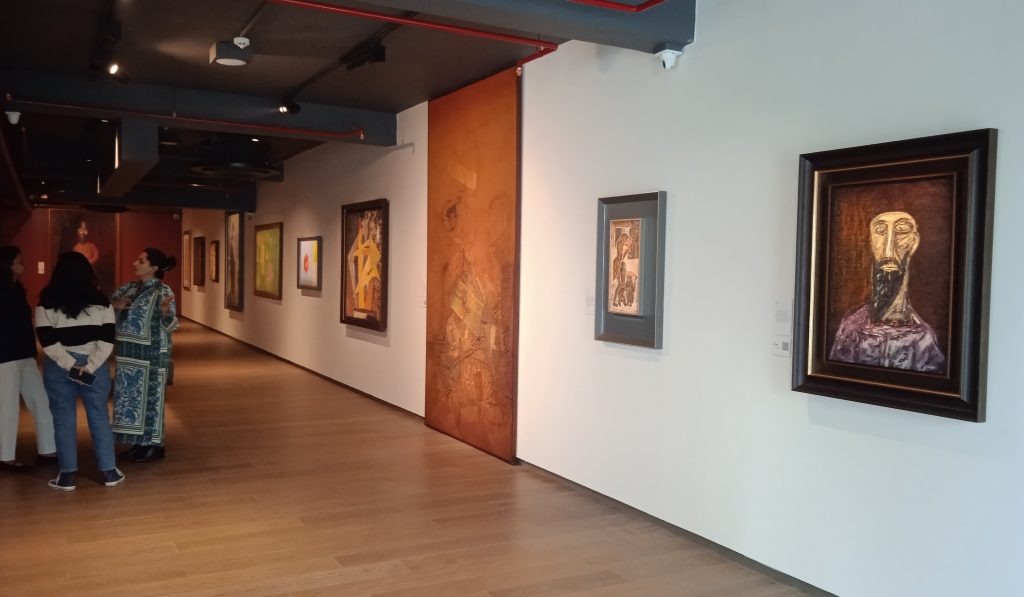
An audience is given a remarkable overview of two centuries of subcontinental art practices in one show, including important movements, artistic interventions, and significant artists. From the brilliant Sita Ram, the epitome of the Company School, to Raja Ravi Varma’s luminance, the Bourn and Sheperd Studio’s Royal portraiture represented the late 18th and early 19th centuries. The exhibition of India’s grown visual language and its extensions, which defied convention while maintaining grammatical integrity, and the exuberant celebration of the variety of Indian art over two centuries of development, fusion, and experimentation are the show’s most essential components.
To enable the audience and scholars of Indian art, aesthetics, and history to comprehend the multi-layered meaning and elements of surprise and odd things, the DAG gallery is organising a museum tour of Indian art. We can go through this show with a curatorial eye that acknowledges and helps expand our knowledge of Indian art and evolved aesthetics.
Legacy of the Indian Landscape
The painting by Thomas Daniell, which is on display for the first time in India and describes the splendour of Mahabalipuram to the 17th-century eye, may be one of the show’s more surprising inclusions. Thomas Daniell, his nephew William Daniell, and their creative efforts in the late 18th and early 19th centuries to document India’s diverse landscapes, architecture, and cultural heritage have made them essential figures in Indian art.
Thomas Daniell meticulously painted and sketched the landscapes, architectural marvels, and cultural experiences he encountered while travelling throughout India. His picture archives provide invaluable insights into India’s past, showcasing the country’s diverse terrain and rich cultural heritage. He published a remarkable series of aquatints titled “Oriental Scenery.”
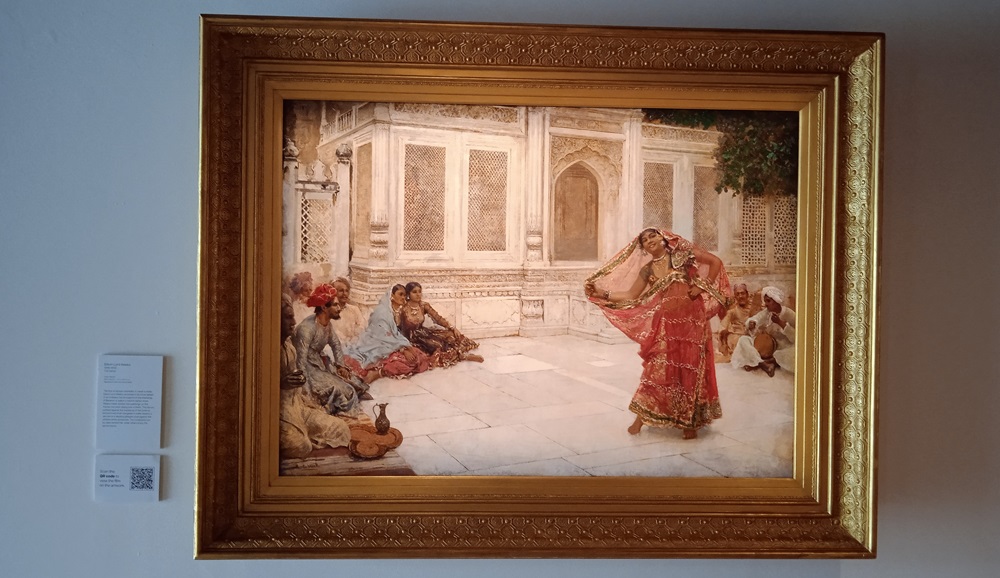
Another relatively forgotten painter from the early 19th century, Sita Ram, depicted a scene of urban India. After completing her training in the Murshidabad campus of the late Mughal School, Sita Ram went on a lengthy domestic trip with the governor-general of India in the 1813s. Sita Ram created about 299 watercolour paintings throughout this extensive voyage, covering ten albums. This watercolour painting of the Bara Imambara in Lucknow shows a lengthy procession heading towards the Rumi Darwaza, a lone figure, and a few other dispersed figures melting into the surrounding scenery. Sita Ram tells the tale of what occurred to him while they were out looking for something.
The remarkable tale of Dutch painter Marius Bauer transports us to the towns and lifestyles of two centuries ago in the East. Bauer painted, etched, and lithographed; most of his work was impressionistic. India and Turkey are thought to have inspired Bauer the most out of all the places he visited. The DAG is showcasing an oil on canvas piece called “Benares” in this exhibition, which tells the story of the oldest city in his signature impressionist style. Within Benares’ legendary and spiritual atmosphere, several figures on the canvas vanished.
Edwin Lord Weeks was the first American orientalist to travel to India and depict India in his vivid canvas. One of the paintings displayed in the DAG show narrates the visual beauty of dance in the Indian cultural context. Edwin Weeks recorded the invitation from Maharaja of Benarus to attend a nutch dance show.
Weeks travelled to India, and he distinguished himself by depicting the country’s people, landscapes, and customs with such accuracy and precision. Weeks was renowned for his accurate and meticulous portrayals of Indian landscapes. His art frequently belonged to the Orientalism subgenre, which sought to depict the strange and foreign facets of Eastern cultures.
He gave Western viewers an insight into Indian customs, architecture, and daily life. Weeks showed an honest interest in and respect for the cultures he depicted, in contrast to certain Orientalist painters who romanticised or exoticised Eastern traditions. His paintings frequently contributed to a more accurate portrayal of the area by expressing a sophisticated awareness of Indian rituals, customs, and daily life.
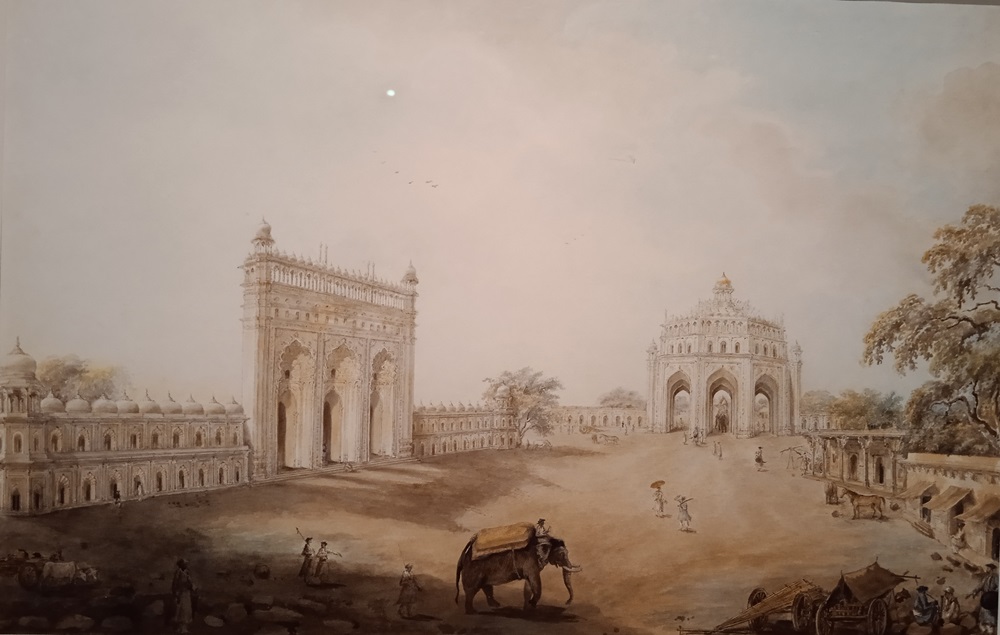
The artist on display, Hemachandranath Mazumdar (1894–1948), gained recognition for his sensual portrayals of women and was a master of the academic style. In his picture “Saaqi,” a barmaid is shown as a companion and courtesan in The Rubaiyat of Omar Khayyam, but in an unbelievable manner. Is she serving herself or someone else with that drink? This intriguing query helps contextualise the “someone” missing from this painting. Allah Bux, a Pakistani painter and calligrapher from Punjab actively involved in aesthetics and classical landscape painting throughout his life, is one of the show’s key figures. He has an artwork on display that shows Krishna with Gopis. Bux is well-known for his connections to Hindu mythology, folklore, and the wealthy Indian patronage that allowed him to create realistic paintings.
Abdur Rahman Chughtai, sometimes known as Chughtai, is credited with helping to revive the Indian tradition of miniature painting. Inspired by Persian and Mughal miniature traditions, he brought a distinct blend of traditional aesthetics and his vision to this form, modernising and contemporising it. His proficiency in this complex art form revived and preserved a rich cultural legacy. As an artist who worked in India between the late 19th and early to mid-20th centuries, Chughtai was not only present for the dramatic changes in the country’s sociopolitical environment but also significantly influenced how art developed in that country.
Legacy of Modern Masters
One of the greatest Indian artists, Akbar Padamsee, has a highly significant painting in this exhibition for numerous reasons. With his significant impact and extensive contributions across various media and styles, he is a multifaceted and vital figure in the Indian art scene. “Head of a Man,” one of F N Souza’s most well-known works, is displayed in this exhibition. In the context of Indian art history, he is also crucial. Souza is an avant-garde personality in the Indian art scene of the mid-20th century, and his art is defined by an expressive style that is audacious and powerful. His paintings frequently have twisted shapes, brilliant colours, and a sober emotional intensity that deviates from the more conventional aesthetic norms of the day.
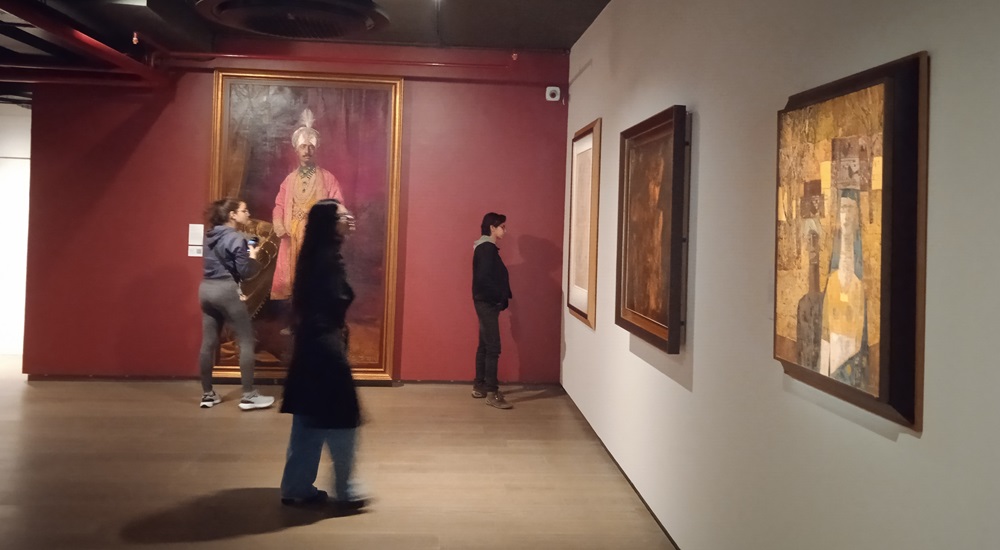
J Swaminathan (1928-1994) is a well-known figure in Indian art history whose diverse contributions—including the painting on display in this exhibition—have left a lasting impression. He seemed to have drawn inspiration from the foundations of tantric art when he employed the triangle, square, and circle symbols central to the tantric visual representation of philosophy; he took cues from the visual lexicon of different tribal societies, infusing their motifs, symbols, and techniques into his work.
Jamini Roy is a highly significant person in the Indian art scene; this show reflects his effect on the evolution of Indian artistic expression. The displayed work affirms Jamini Roy’s unique aesthetics for modern Indian art, which he achieved by combining aspects of Kalighat Patachitras and traditional Bengali folk art. He also frequently experimented with numerous other genres. The artwork on exhibit draws inspiration from the Tibetan Buddhist thanga or hanging scroll. His use of strong lines, vivid colours, and folk art-inspired narrative approaches is a welcome diversion from the conventional academic norms; this signalled a significant change in the direction of honouring India’s creative legacy.
An iconic sculptor, Meera Mukherjee, and pioneer painter, Nandalal Bose, hold spacious significance in Indian art for their pioneering contributions that transcended traditional boundaries and brought a unique voice to this show’s sculptural- painting landscape.

Krispin Joseph PX, a poet and journalist, completed an MFA in art history and visual studies at the University of Hyderabad.

